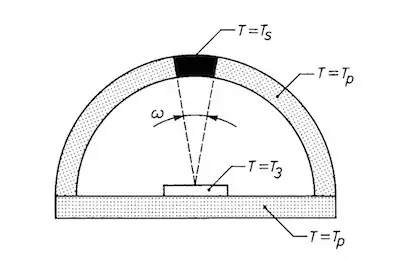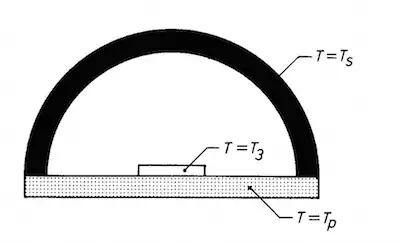The sun is an extended source. This means that it occupies a definite solid angle in the sky $\omega = 6.8\times 10^{-5} Sr$.
To visualise this (not to scale), let's say that the black area in the following diagram is the angular extent of the sun as seen from the surface of the Earth (ignore the other labels),

What happens when we concentrate sunlight from the perspective of the white plate in the diagram? Answer: the sun looks bigger! It begins to fill more of the "sky".
When light rays are traveling from all angles towards the plate then we have reached maximum concentration.

So maximum concentration is defined as when the true angular size of the sun is made to fill a hemisphere solid angles. The angular size of the sun is approx. $\theta_s = 0.2666^{\circ}$, note this is the half-angle, therefore performing the solid angle integration yields,
$$
X_{2D} = \frac{\iint_{2\pi}\cos\theta\ d\omega}{\iint_{\omega_s}\cos\theta\ d\omega} = \frac{\int_0^{2\pi}d \phi \int_0^{\pi/2} \cos\theta\sin\theta\ d \theta }{\int_0^{2\pi}d \phi \int_0^{\theta_s} \cos\theta\sin\theta\ d \theta} = \frac{\frac{2\pi}{2}}{\frac{2\pi\sin^2\theta_s}{2}} = \frac{\pi}{6.8\times 10^{-5} Sr} = 46200\times
$$
This assumes that we can change the angular extent of light in both $x$ and $y$ and focus to a point. If instead you can only focus to a line then the limit is much smaller,
$$
X_{1D} = 220\times
$$

